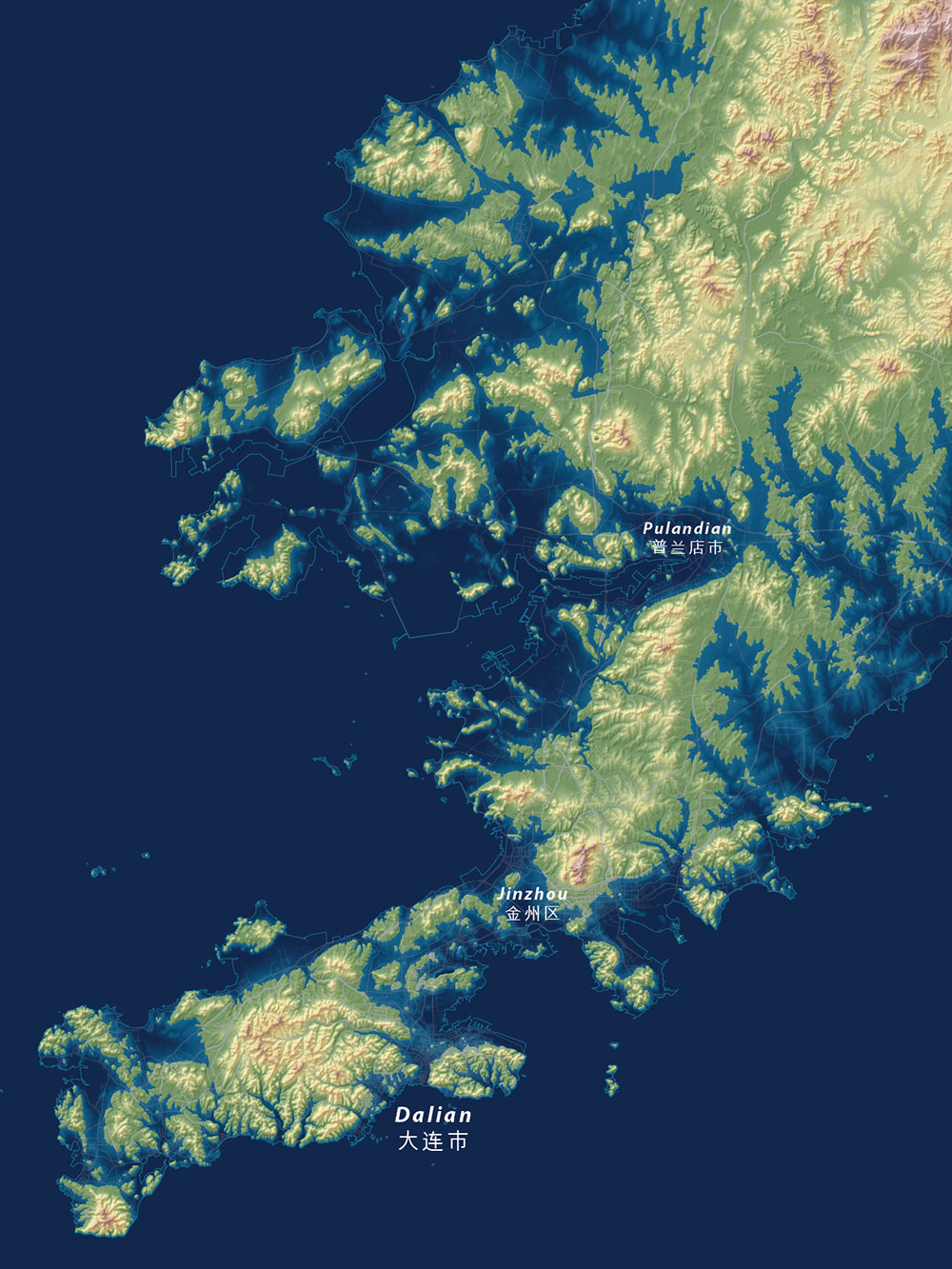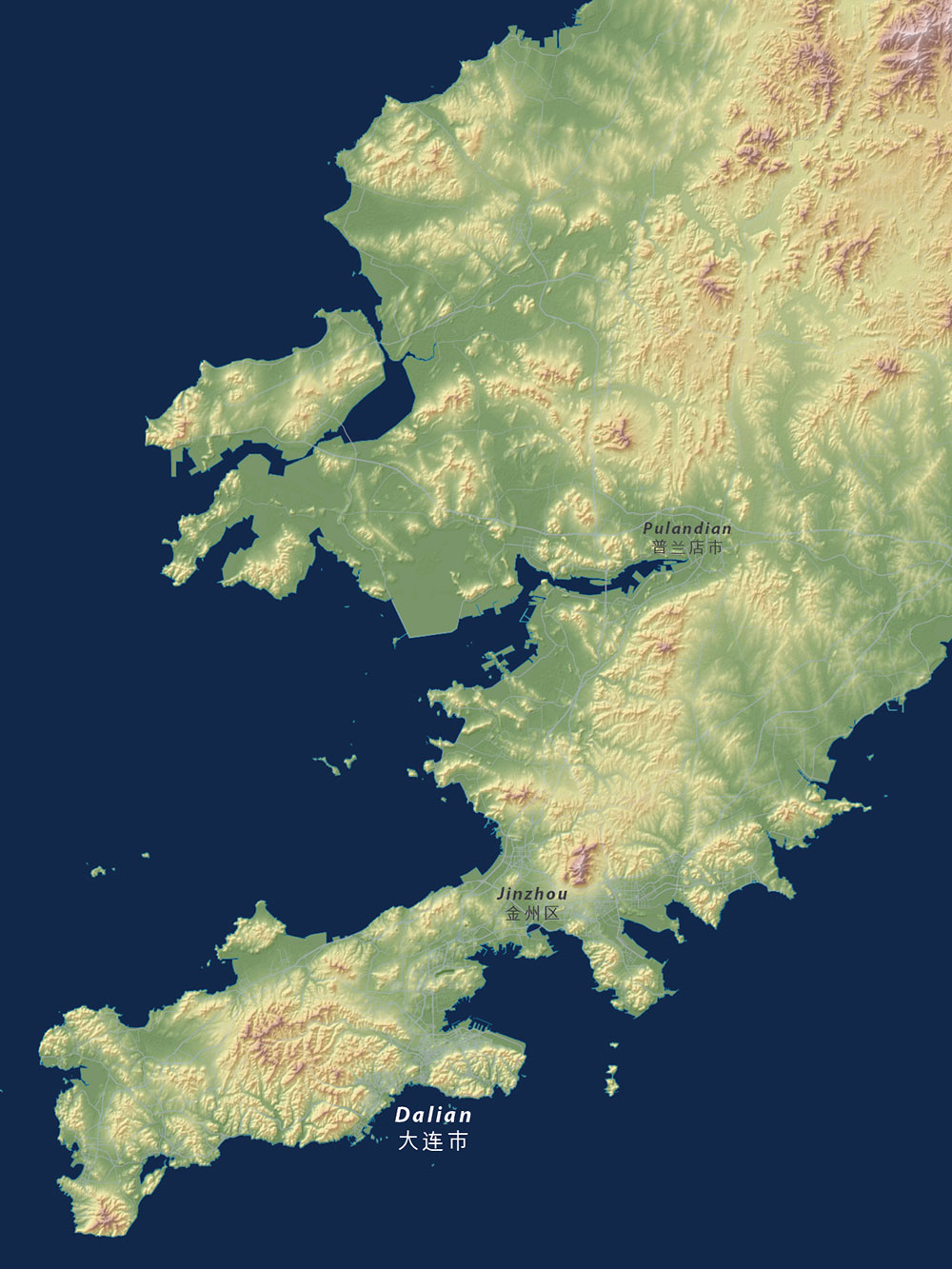The warming of the earth’s climate has already changed life on its surface in substantial ways. The Intergovernmental Panel on Climate Change (IPCC) has been monitoring the planet’s cryosphere—water frozen in the forms of ice, snow, glaciers, permafrost, etc.—for the last several decades. Since their study began in 1979, this frozen water has been steadily melting—especially sea ice, glaciers, and ice sheets—and running into the world’s oceans, causing them to rise.
According to the IPCC’s most recent predictions, if the current trajectory continues, as many scientists fear it will, the world’s sea level will rise dramatically, submerging many of the world’s current coastlines under more than 200 feet of water.
That future may still be centuries off, but cartographer Jeffrey Linn has already begun to fathom what the world will look like when it arrives. His maps of Seattle (his hometown), Los Angeles and San Diego, Portland, and Vancouver plot the new coastlines that will emerge from the rising waters.
ChinaFile asked Linn to apply the same techniques to China’s coast, where some 43% of its population currently lives. In the maps below, use your mouse to shift between the coastal cities’ current coastlines and their contours as the planet’s temperature continues to warm over the course of the 21st century and into the next century.—David M. Barreda
* * *
Qingdao, the hometown of the ubiquitous Tsingtao Brewery, is a city of more than three and a half million people over 300 miles southeast of Beijing, in Shandong province. A complete melting of the cryosphere would turn nearby mountains into islands and submerge the cities of Jimo (population 70,733) and Chengyang (population 66,588).
Shanghai, with its current population of more than 20 million, would be completely underwater if all of the ice melts, and ocean water would reach miles up the Yangtze river.
The tourist destination island of Hainan is known for its sunny, tropical weather and fine beaches. Its provincial capital faces out across the Qiongzhou Strait to Hai’an Bay. However, most of the city lies below the 200 foot elevation mark. When the ice melts, tourists would need to look for beaches somewhere else.
Hong Kong is one of the most densely populated places in the world, due in large part to it being a mountainous island. In 2013, some 36 million visitors came to the island. On China’s southeast coast, Shenzhen is one of the world’s greatest factory cities. A rising sea level will have disastrous effects that we can only imagine when looking at the map below.
The sea rise would dramatically alter the entire Pearl River Delta, where more than 30 million people live.
Sliding between the two maps of Taiwan below, it looks like very little will change. But like many places around the world, most of the population lives near the coast—which means at low elevation.





